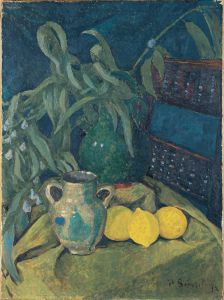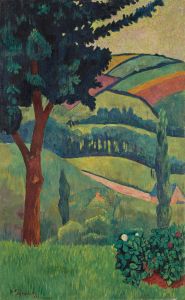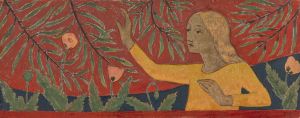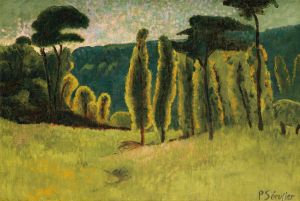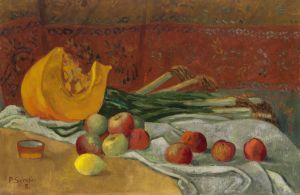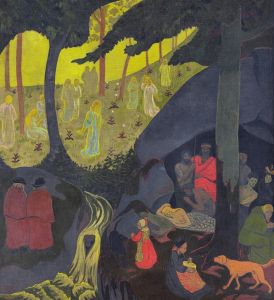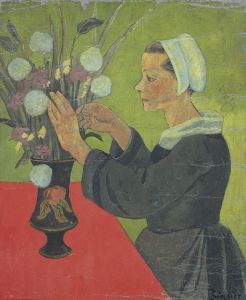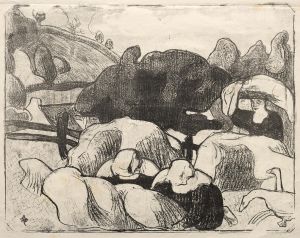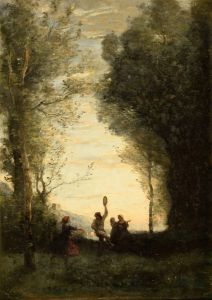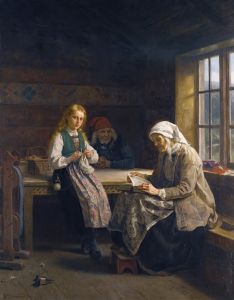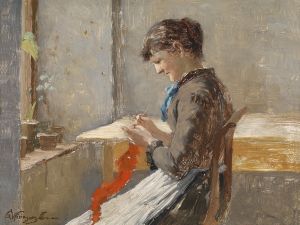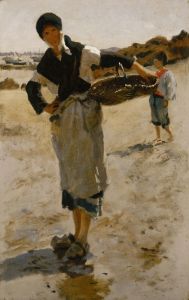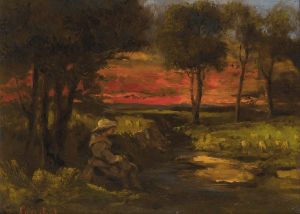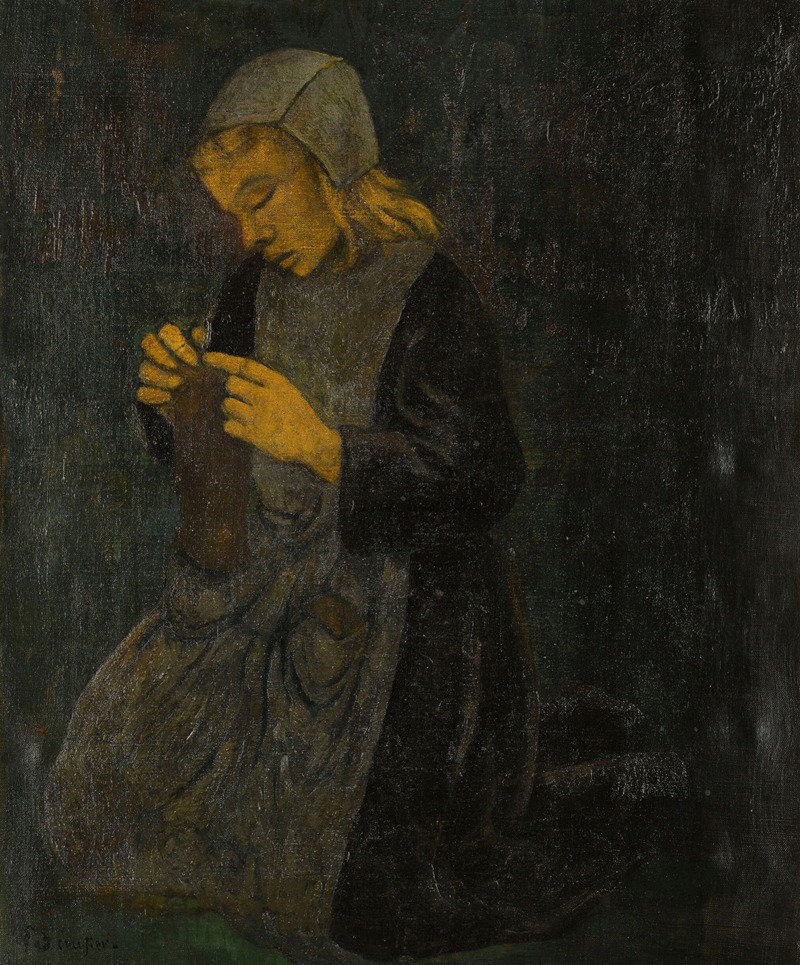
Jeune bretonne tricotant
A hand-painted replica of Paul Sérusier’s masterpiece Jeune bretonne tricotant, meticulously crafted by professional artists to capture the true essence of the original. Each piece is created with museum-quality canvas and rare mineral pigments, carefully painted by experienced artists with delicate brushstrokes and rich, layered colors to perfectly recreate the texture of the original artwork. Unlike machine-printed reproductions, this hand-painted version brings the painting to life, infused with the artist’s emotions and skill in every stroke. Whether for personal collection or home decoration, it instantly elevates the artistic atmosphere of any space.
Jeune bretonne tricotant, translated as "Young Breton Woman Knitting," is a painting by the French artist Paul Sérusier, a prominent figure associated with the Post-Impressionist movement and the Nabis group. Sérusier, born in 1864, was known for his innovative use of color and form, which were influenced by his interactions with Paul Gauguin and his involvement with the Nabis, a group of avant-garde artists in the late 19th century.
The painting depicts a young woman from Brittany, a region in northwestern France known for its distinct cultural identity and traditional customs. The subject is engaged in the act of knitting, a common and practical activity that also serves as a symbol of domestic life and cultural heritage. The choice of a Breton woman as the subject reflects Sérusier's interest in the rural and traditional aspects of French life, which were often romanticized by artists of his time.
Sérusier's style in Jeune bretonne tricotant is characterized by bold colors and simplified forms, a hallmark of the Synthetist approach that he adopted after his pivotal encounter with Gauguin in Pont-Aven in 1888. This approach emphasized the use of color to convey emotion and meaning, rather than relying on realistic representation. The painting likely features flat areas of color and a lack of perspective, which are typical of Sérusier's work during this period.
The Nabis, with whom Sérusier was closely associated, were a group of artists who sought to break away from the naturalism that dominated the art world at the time. They were inspired by Symbolism and sought to imbue their works with spiritual and emotional depth. Sérusier's Jeune bretonne tricotant can be seen as an embodiment of these ideals, using the everyday scene of a woman knitting to explore broader themes of identity, tradition, and the artist's subjective experience.
The painting is also significant for its reflection of the cultural and artistic exchanges occurring in Brittany during the late 19th century. The region attracted many artists who were drawn to its picturesque landscapes and unique cultural practices. Sérusier's work captures the essence of this environment, blending the local color and customs with avant-garde artistic techniques.
While specific details about the creation and exhibition history of Jeune bretonne tricotant are not extensively documented, the painting remains an important example of Sérusier's contribution to the Post-Impressionist movement and his role in the development of modern art. It exemplifies the transition from traditional representation to a more abstract and symbolic use of color and form, which would influence future generations of artists.
In summary, Jeune bretonne tricotant by Paul Sérusier is a notable work that reflects the artist's innovative approach to color and form, his engagement with the cultural identity of Brittany, and his involvement with the Nabis group. The painting stands as a testament to the dynamic artistic explorations of the late 19th century and Sérusier's enduring impact on the trajectory of modern art.





